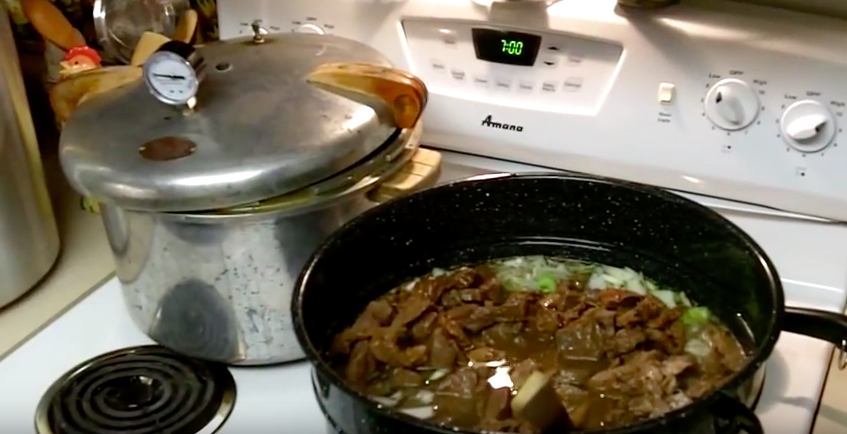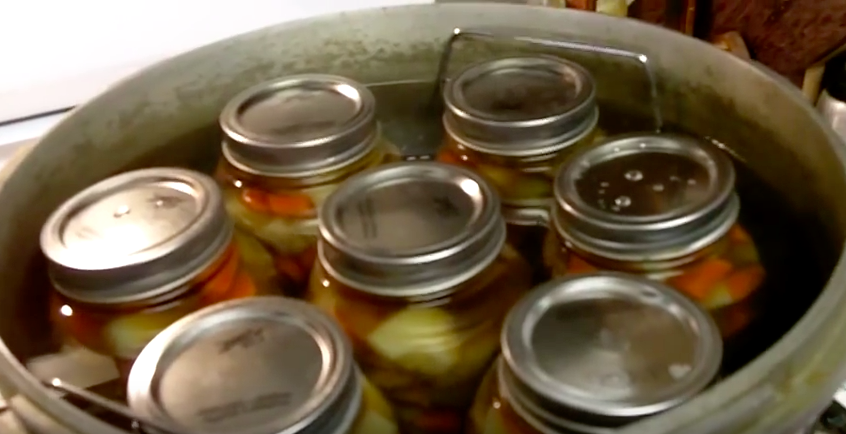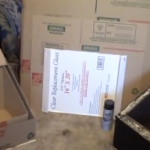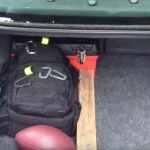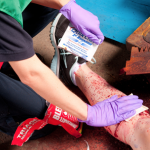Pre-Cooking the Stew
The first step is to gather your ingredients. Make sure to include a healthy amount of potatoes, carrots, peas, celery, onions and the seasoning of your choice. Choose high-quality, fresh beef and be ready to store the stew on the same day that is cooked. Cut the beef, potatoes and carrots into 1 – 1 ½ inch cubes. Brown the beef in a skillet with a little bit of oil. Place in a stockpot and add all of the veggies and seasonings. Bring everything to a boil and remove from heat. We are not cooking the stew completely. Rather, just enough to kill the bacteria and soften the vegetables just a little bit.
Preparing the Jars

It is very important that you sterilize your canning jars, lids and seals before processing the stew. You also want to heat the jars and lids until prior to canning by placing the items in a pot of water that is heated to a low simmer. Adding the hot stew mix to a cold jar can cause it to crack while cold lids can fail to seal properly.
Canning
Prepare the pressure canner before cooking the stew so that it is ready to process the food after it has been par-cooked. Once the stew comes to a boil, carefully ladle it into the canning jars and fill with the juices until an inch of headspace remains. Attach the seals and lids and place in the pressure canner.
Normal pressure for canning this recipe is 10PSI at sea level, but you will need to increase pressure at higher altitudes. Follow pressure charts to account for altitude as well as the type of gauge that you are using to ensure that the product is heated properly during processing.
In every case, place two inches of water into the canner, bring to a boil and vent the steam for 10 minutes before opening the canner and inserting the jars. Attach the lid, gauge and start timing after the water in the canner is boiling and pressure levels are achieved. Normal processing time for pint jars is 1 hour and 15 minutes at sea level and 1 hour and 30 minutes for quarts. Adjust as necessary for altitude.
After the time has passed, turn off the heat and allow the canner to cool until pressure reaches zero. Open the canner and remove the jars. Allow them to cool to room temperature before checking the seals, labeling, dating and storing the stew in a dark, cool place.
Canned beef stew can last for years, but actual shelf-life will depend on a variety of factors ranging from how the jars are stored to the quality of the seals. Expect to consume the products within a year to be on the safe side, and always use a smell test to determine if the stew is safe to eat. Also, look for signs of spoilage such as the discoloration of the meat, slimy liquids or the development of fungi. Never taste-test canned meat products as you will ingest harmful bacteria or other microorganisms that can make you sick if the product soured during storage.
Try this out for yourself, and see how easy it is to incorporate this delicious meal into your survival food stockpile. Just remember to choose quart or pint jars based on portions that you expect to consume so you can minimize waste.
More Articles From This SIte
Pages:
- 1
- 2


